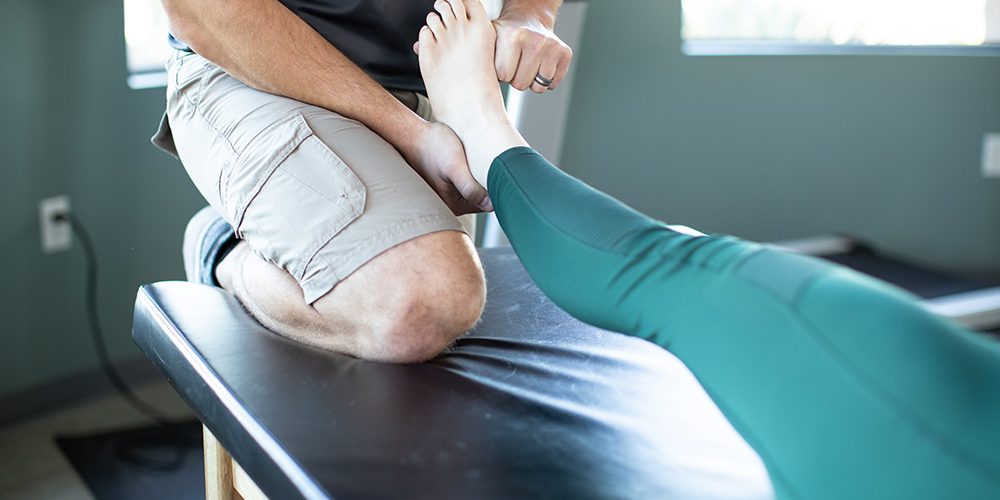Unraveling the Mystery: What is Plantar Fasciitis?
Plantar fasciitis is a prevalent condition that causes discomfort and pain in the heel and bottom of the foot. The culprit behind this condition is the inflammation of the plantar fascia, a thick band of tissue that runs from your heel to your toes. This band of tissue plays a crucial role in our daily activities as it acts as a shock absorber and supports the arch of your foot, helping you walk. The pain is usually worse in the morning when you take your first steps out of bed, or after long periods of rest.
How do People Get Plantar Fasciitis?
Plantar fasciitis often stems from excessive stretching of the plantar fascia ligament. It can be triggered by overuse from too much physical activity, running, walking or standing for a long time, particularly if there is a rapid increase in activity over a short period of time.
Other contributing factors include obesity, aging, wearing shoes without adequate cushioning, walking barefoot on hard surfaces, and occupations that require walking or standing for extended periods.
Understanding these causes can help in create an effective prevention strategies that you can do at home, office or on your own.
The Road to Recovery: How do You Treat and Cure Plantar Fasciitis?
The treatment for plantar fasciitis aims to alleviate inflammation and pain in the heels.
Physical therapy exercises to strengthen lower leg muscles are also beneficial and often the first place to start for an initial assessment of the plant fasciitis, as well as building an exercise treatment plan on your road to recovery.
These exercises can help stabilize your ankle and heel, while also providing necessary flexibility. But you can also perform these exercises at home.
One of the more popular exercise and treatment tools to help prevent and treat plantar fasciitis as part of a recovery plan is a professional slant board. Slant boards are commonly used by physical therapists and can also be used at home. Should you decide to pick up the same professional slant board that your physical therapist has in their clinic, browse Amazon.com for BAM’s professional slant board for calf stretching to treat plantar fasciitis. Ask someone who has treated their planter fasciitis with a professional slant board to get their first-hand experience how it helped in their recovery, and prevent. Slant boards are a great tool, among special foot straps and bands to stretch the fasciitis.
Why? Slant board and calf wedges can help by allowing you to adjust the incline thus the level of light or deep stretch that is most comfortable for you. Additionally, a professional slant board offers the following added benefits.
-
- Stretching the Plantar Fascia: The slant board is used to stretch the plantar fascia, the band of tissue that runs from the heel to the toes. Regular stretching can improve flexibility and range of motion, which can help alleviate pain and discomfort associated with plantar fasciitis.
- Increasing Blood Flow: Regularly stretching the plantar fascia can help increase blood flow to the area, which can aid in recovery from injury or overuse.
- Strengthening Lower Leg Muscles: The slant board can also be used to strengthen the muscles in the foot and lower leg. Stronger muscles can provide better support to the plantar fascia, reducing strain on it and helping prevent plantar fasciitis.
- Improving Flexibility and Strength: The benefits of using a slant board for plantar fasciitis include improved flexibility and strength in the muscles of the foot and lower leg, reduced pain and discomfort, and improved range of motion.
- Preventing Further Injury: This treatment can also help to prevent further injury and promote healing.
- Enhancing Ankle Mobility: Slant board exercises are particularly beneficial for individuals with ankle mobility restrictions. They help you reach the end ranges of your knee and hip.
- Nurturing the Achilles Tendon: Incorporating gentle calf stretches and nurturing the Achilles tendon contributes to holistic recovery and prevention of plantar fasciitis.
Physical therapy clinics will have these exercise tools available, or you can pick one up for the home to aid in your recovery. Having a slant board at home also enables you to gain many other health benefits from using it beyond the treatment and prevention of plantar fascitiis.
It can improve flexibility, mobility, and balance. It can also help prevent knee, calf, and ankle injuries, prevent calf cramps and strains, and build stronger, healthier knees, calves, and ankles.
As always, it’s recommended to consult a doctor or physical therapist if you suspect you have plantar fasciitis or other foot conditions. They can help you determine the cause of your symptoms and develop a treatment plan tailored to your specific needs.
Consult a doctor or physical therapist first, but nonsteroidal anti-inflammatory drugs (NSAIDs) may be recommended by a doctor to reduce inflammation and relieve pain. In severe cases, surgery may be performed to detach the plantar fascia from the heel bone.
The Healing Signs and Process of Plantar Fasciitis
The healing process of plantar fasciitis varies from person to person, depending on the severity of the condition and the individual’s overall health.
Some people may experience relief within weeks, while others may take several months to a year to fully recover.
Signs of recovery include a gradual decrease in pain, especially in the morning or after periods of rest, increased mobility, and the ability to stand or walk for longer periods without discomfort.
It’s important to continue with the recommended treatment plan even after symptoms improve to prevent recurrence.
In conclusion, understanding the healing signs and process of plantar fasciitis is crucial for recovery. With the right information, treatment options, and tools like a wooden slant board, individuals suffering from plantar fasciitis can reclaim a pain-free life.
Please note that it’s always a good idea to consult with a healthcare professional for personalized advice.







